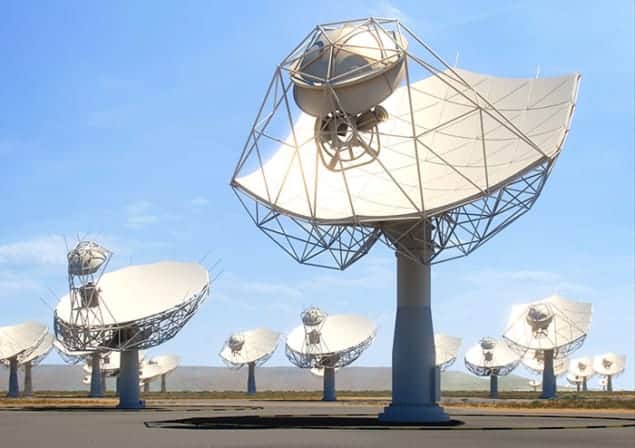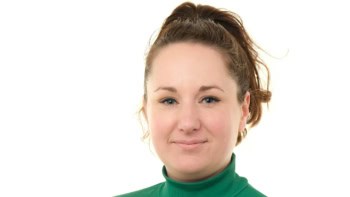
Rising costs have forced scientists to cut back plans for the world’s largest radio telescope, known as the Square Kilometre Array (SKA). The project’s first phase will now contain fewer antennas spread over a smaller area with poorer frequency coverage than was envisaged two years ago. Even though representatives of the 10 countries funding the SKA are confident that the observatory will “deliver transformational science capabilities”, astronomers are nonetheless worried about the impact of a far more compact set of antennas in Australia.
As its name suggests, the SKA will ultimately consist of antennas with a combined collecting area of 1 km2. Its full design calls for thousands of mid-frequency radio dishes spread out across southern Africa and a million low-frequency dipole antennas distributed throughout Australasia. But with a likely price tag of several billion Euros, the partner countries – currently Australia, Canada, China, India, Italy, New Zealand, South Africa, Sweden, the Netherlands and the UK – are initially building a slimmed-down version known as SKA1.
However, even SKA1 is proving a headache. A first incarnation, consisting of 250 dishes in Africa and about 250,000 antennas in Australia, was proposed in 2013 in response to a cost cap of €674m (in 2016 prices) imposed by the partner countries. Yet a subsequent increase in the estimated cost meant that the proposal had to be scaled back two years later. Now, following a further price rise of about €150m, plans have had to be pared back further still.
Deployment baseline
At a meeting held in the Netherlands on 18–19 July, the SKA council approved a “deployment baseline” drawn up by the project’s management. Compared to the design laid out in 2015, this involves reducing the number of African dishes by three to 130 and spreading those dishes out over just 120 km – as opposed to 150 km. It also halves the number of dishes that are sensitive to all three of the frequency bands foreseen at this stage of the project and reduces equipment used to observe pulsars. The cutbacks also involve slashing computing power by more than 80% with the idea that the shortfall can be made up when processors are cheaper.
Heino Falcke, a radio astronomer at Radboud University in Nijmegen, the Netherlands, says he is “surprised in a positive sense” with what he describes as “fairly modest” changes. He is, however, worried by cuts to the Australian portion of the project. These involve reducing the number of antenna stations from 512 to 476 and squeezing those stations along a “baseline” of 40 km rather than 65 km. Doing so, he explains, might impede astronomers’ ability to remove foreground radio noise when measuring hydrogen emission from the universe’s “dark age” shortly after the Big Bang – one of the SKA’s headline aims. “I hope it would still be possible,” he says, “but the change adds uncertainty.”
According to Philip Diamond, director-general of the SKA Organisation based at Jodrell Bank in the UK, astronomers advising on the cuts had initially said that 40 km would probably be enough, but that after doing additional modelling of the telescope’s likely performance they became “a little bit concerned” about the shortening. “They haven’t finished those simulations yet, but they raised their hands and said they are not sure about this,” he says.
Approval needed
Diamond says that the Australian baseline could be extended back to 50 km at a cost of about €14m, which, he suggests, could be made available if just one of seven possible new partner countries joins the project. As things stand, the existing members have yet to formally approve funding, but Diamond expects them to do so in the first half of 2019, following the setting up of an intergovernmental organization to oversee the project. Construction should then start a few months later and take around five years to complete.
Although the full SKA remains on the back burner for the moment, Diamond is heartened by council’s approval of the reformulated SKA1. “I have always known that [realising the SKA] would be tough,” he says, “but I felt quite buoyant after the meeting.”



